The Acura NSX finally made it into production specification today in Detroit and, as expected, the wait has been worthwhile. The internal combustion engine is now hyperventilating with twin-turbos instead of the naturally-aspirated version we saw previously, it boasts three electric motors and pushes more than 550 hp through a nine-speed dual clutch transmission, while the price tag will be in the vicinity of US$150,000 when it lands later this year.
Sound complicated? It is complicated, and perhaps one of the most complicated semi-mass-production cars yet built. Most importantly, there's a lot of evidence suggesting Acura has evolved something very special during this longer-than-anticipated gestation period.
The entire press presentation is available on video at the bottom of this article, and the theme of the presentation is that the NSX was developed as a "human-centered supercar," and a car that "puts the driver first in every aspect of its design."
Translating the PR speak, because I'm sure Infiniti, Lexus, Jaguar, Maserati, Ferrari and another couple of dozen sports car makers are all attempting to delight their customers too, the aim has been to provide a car which is very responsive and sweet in its handling.
It's normally hard to tell how well a car has achieved its goals simply from looking at it, but the length of time and the number of iterations of the design we've known has been coming for many years now, suggests that Acura has gone to ridiculous lengths in getting it right.
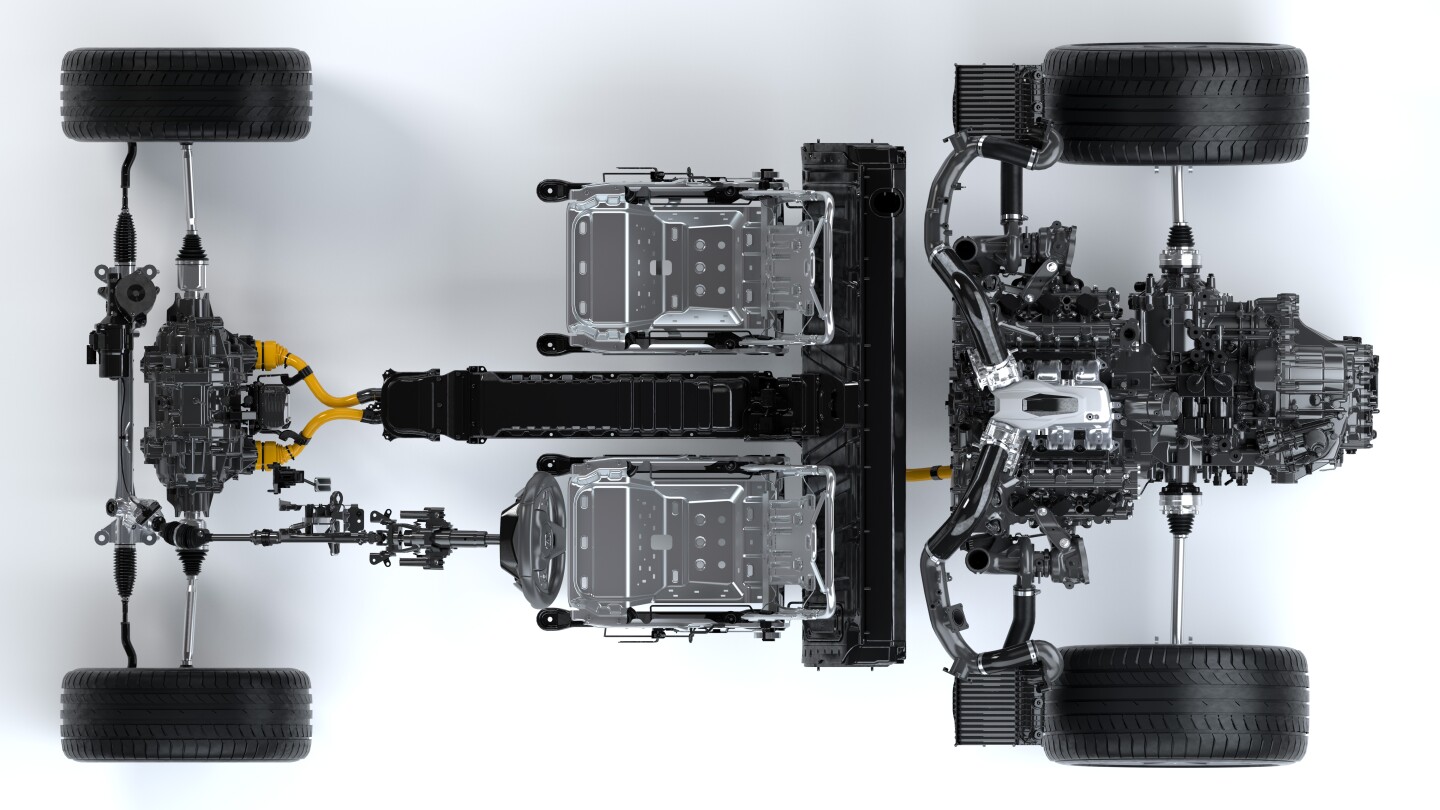
The V6 is mounted longitudinally, centrally and very low in the chassis in an attempt to get the center of gravity as low as possible (Acura claims the NSX has the lowest center of gravity in its class), and the placement of all powertrain components has been designed to concentrate vehicle mass toward the center of the vehicle. The center of gravity is just the average position of mass – the closer the mass to that center of gravity, the better the vehicle's response.
I suspect, however, that despite this radical overall mass centralization, the biggest factor in the NSX handling will be in the software that combines the respective efforts of the three electric motors – one on each front wheel and one for the rear wheels – with the heavy-breathing internal combustion motor. That will be where the magic happens and it's no coincidence that Honda (Acura) has rejoined the Formula One "engine supplier" ranks again this year.
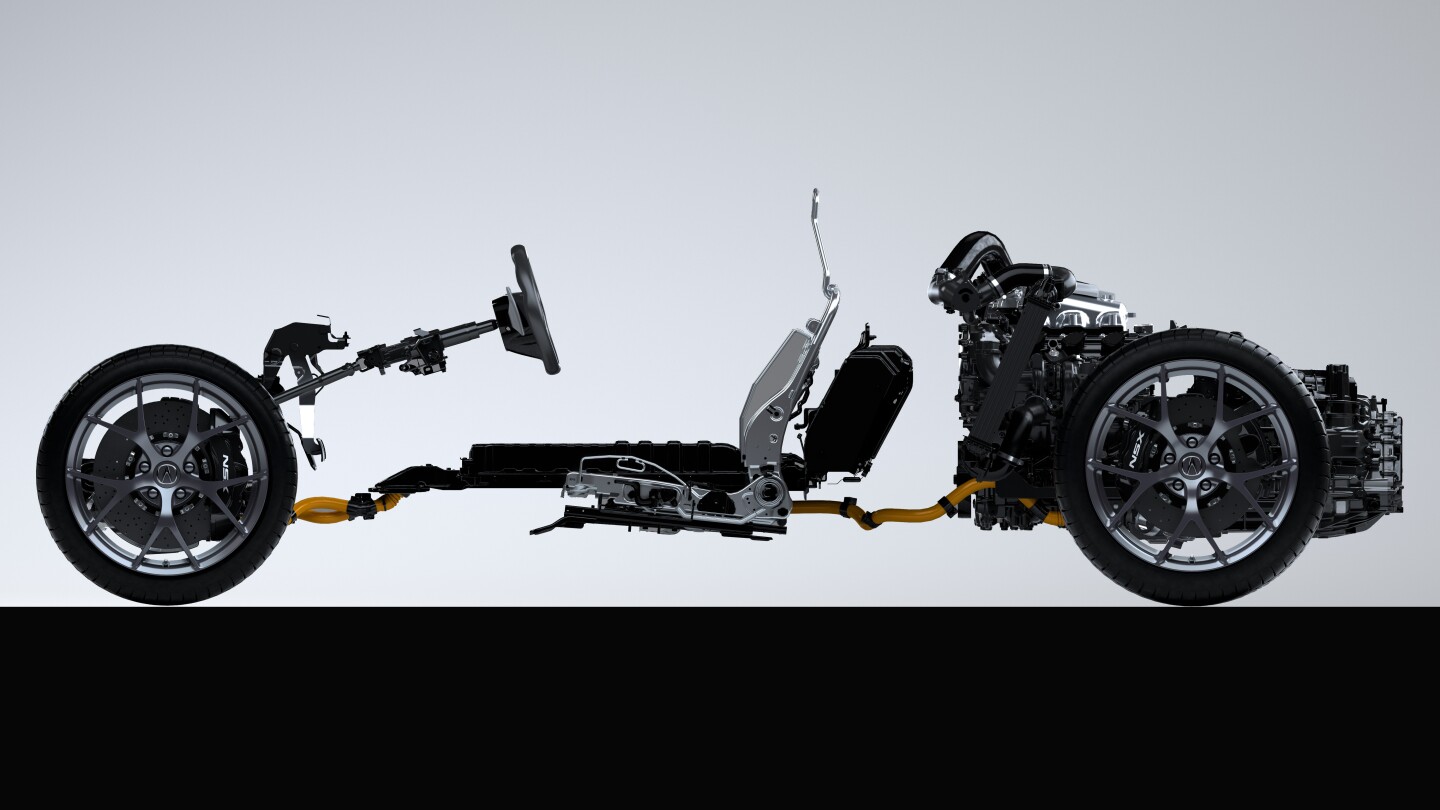
As Mercedes-Benz so perfectly illustrated during the 2014 Formula One season, the term "engine supplier" is used somewhat loosely in F1 these days, as high performance hybrid powertrains have now transcended the days where a single power unit supplied motive force via mechanical linkages to the two rear wheels.
The wizardry is no longer just mechanical, and high performance manufacturers are clearly still learning about all the complexities of choreographing two, three and, in this case, four power units to get the job done perfectly in every instance. The failure of Ferrari and Renault to be competitive in Formula One in 2014 and the inconsistent performance of Toyota, Porsche and Audi in WEC racing during last year suggests that full understanding of the complexities of high performance hybrids is still some way away, at least at racing speeds over a long journey.
Another acronym that cropped up in the press materials suggesting the immense complexity involved in the NSX's handling package was Agile Handling Assist (AHA), which "uses the subtle application of brake torque to further enhance yaw response and dynamic stability."

As complexity has increased exponentially with four "engines", massive computing and dynamic torque-vectoring technologies, previously unknown heat sources, synergies and myriad other interactions have emerged, and there is evidence that Acura has completely re-engineered almost everything on the vehicle several times in bringing the second-generation NSX to market.
My take on this is that the final product we saw yesterday will be astonishingly good, probably even better for its time than the original NSX was 25 years ago, which is a case in point.
The original NSX was very, very good, and just how good it was still hasn't been appreciated by the marketplace. That's because it was produced in significant numbers (around 18,000 units) for a supercar, and thanks to the laws of supply and demand, many a good car that was made in large numbers doesn't command all that much on the auction block... yet!
Though the original NSX doesn't appear at auction all that often, in all but the rarest cases, it still hasn't recouped its initial $60,000 to $85,000 price (it increased in price during its 14 year on-sale period), with auction results only just beginning to approach those original values. Those bargain auction prices won't last forever, because the old NSX is a fantastic car.
Faced with replicating the bargain-basement supercar a quarter of a century hence, Acura's engineers appear to have achieved their goals and there's little doubt that the new NSX (which stands for "New Sportscar eXperimental", by the way) is also going to be astonishingly good, because Acura takes its job very seriously and its legion of engineers has spent several intensive years developing it to be leading edge.
Acura calls the four-wheel powertrain "Super-Handling All-Wheel Drive" (SH-AWD) and no doubt it will get better over time, though Acura was leaving no doubt at the press conference and in conversation afterwards that it believes it has already created "the most sophisticated, technologically-advanced and intelligent powertrain in the supercar universe."
It's not all that long ago that there was a strong Luddite resistance in automotive circles to the concept of drive-by-wire. In light of the direction automotive design is now moving at warp speed, that resistance really was futile.
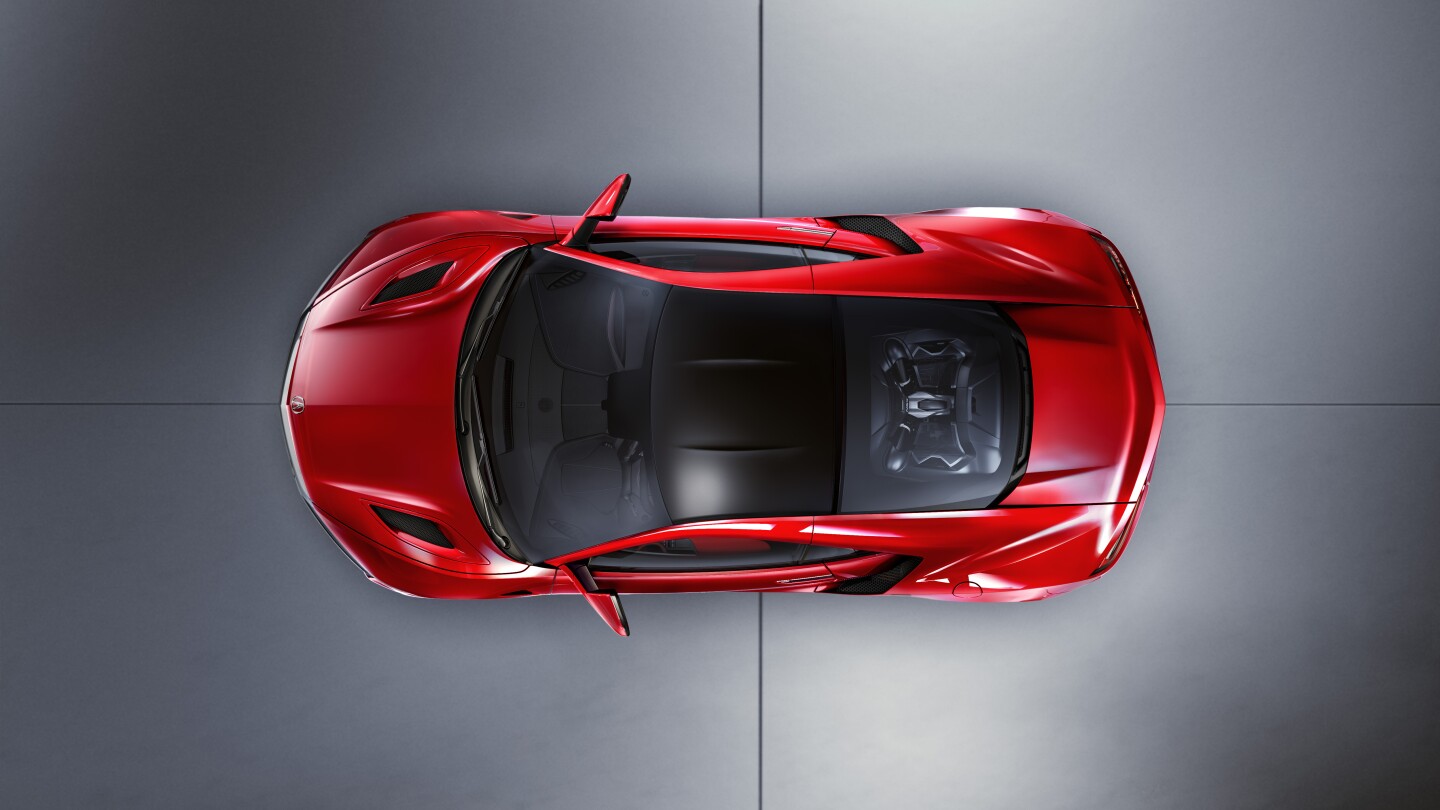
Acura terms the acceleration of the NSX, with its four wheels all electrically driven plus the nine-speed dual clutch gearbox providing one seamless surge of torque, as "zero delay" – I for one cannot wait to try it. Compare the interminable delay between power engagements of this US$50 million V12 Ferrari 250 GTO to what you can expect from the $150,000 NSX and I'm sure you'll agree that "zero delay" will get you around any stretch of tarmac faster. Reading between the lines, what Acura is attempting to convey is that, although the raw edges and ripping sounds of yesteryear are gone, the balance and G-forces and driver experience have been enhanced ... a lot.
"The soul of a car is the emotional connection it makes with the driver," according to Mike Accavitti, senior VP and GM of the Acura division. "With the NSX, that connection will be intense and immediate."
Four modes – quiet, sport, sport+ and track
The NSX has four driving modes: Quiet, Sport, Sport+ and Track. The driver adjusts the mode via a dial, which in turn changes the cadence of the electric engines, intake and exhaust characteristics of the internal combustion motor, transmission and chassis response, to the driver's requirements. For tippy-toe, coming-home-late in a gated community needs, there's an electric-only, super-quiet mode.
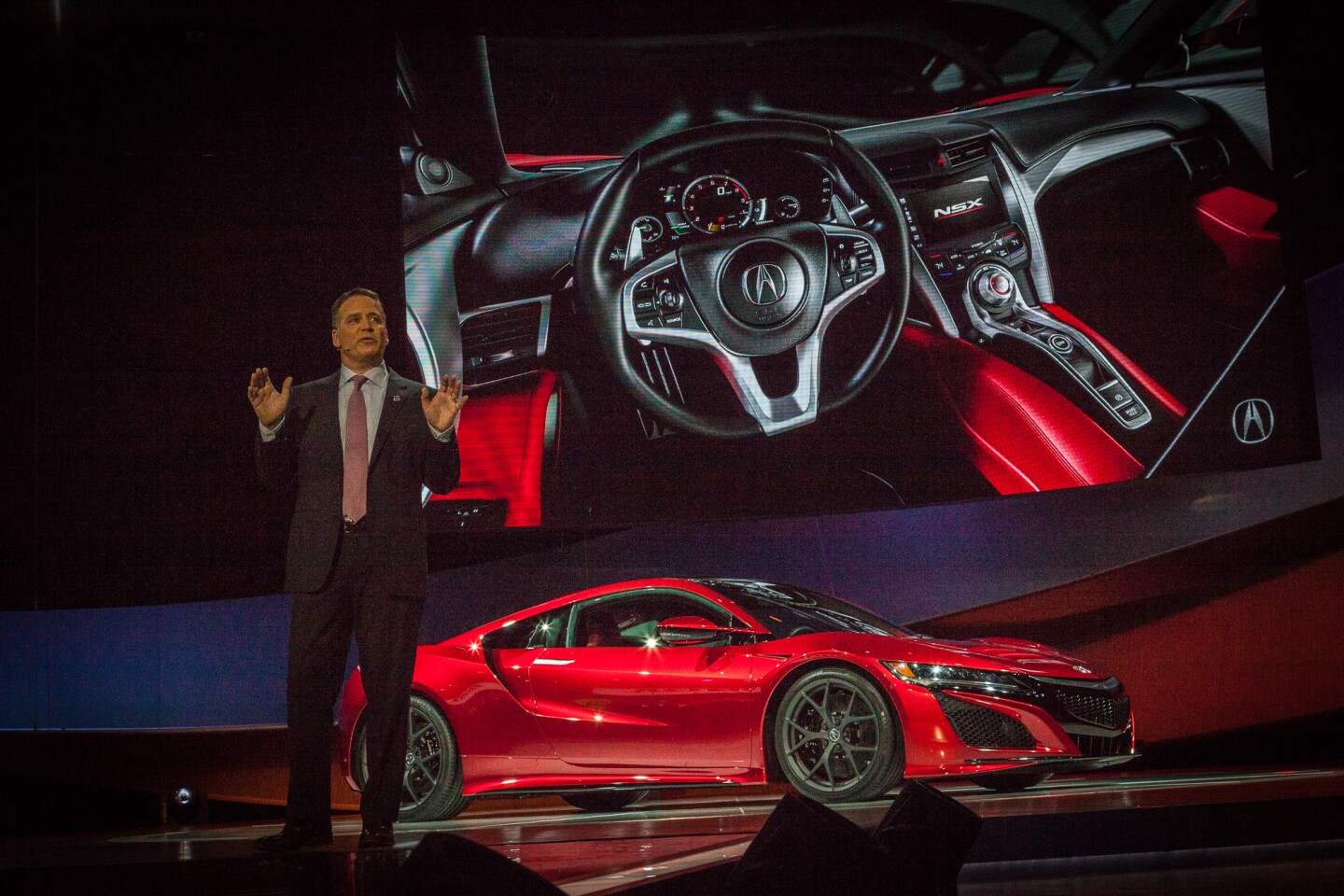
As the tempo increases and the roads become suitable, the dynamic vehicle response can be sharpened as the driver dials up from Sport to Sport+ mode.
Track mode is the top of the range and it's where the NSX "reveals the full spectrum of its performance capabilities", according to Acura. Unlike Ford's new GT and many other high-end supercars, the NSX doesn't change its aerodynamic profile and raise its plumage when it gets serious. It just quietly goes about its business delivering performance. That will suit some people, others less so.
One final aspect which we don't have any details on is the "launch" function designed to have the car accelerate as quickly as possible from standstill.
Styling and aerodynamics

You'll either like it or not. What can be assured is that the NSX has spent a lot of time in both a theoretical and real wind tunnel getting the airflows right to extract the heat and balance the NSX on the road for optimum effect at all speeds. Every element of the shape has been fashioned and refashioned as can be seen from the number of changes from concept to final body design: hood vents, front fender vents, side air intakes, and spoiler.
Human Support Cockpit
Yes, that's what they're calling it – the Human Support Cockpit.
The NSX interior has exceptional forward visibility, a reconfigurable information display and a seat with comfort and great body holding characteristics that's relatively easy to get in and out of.
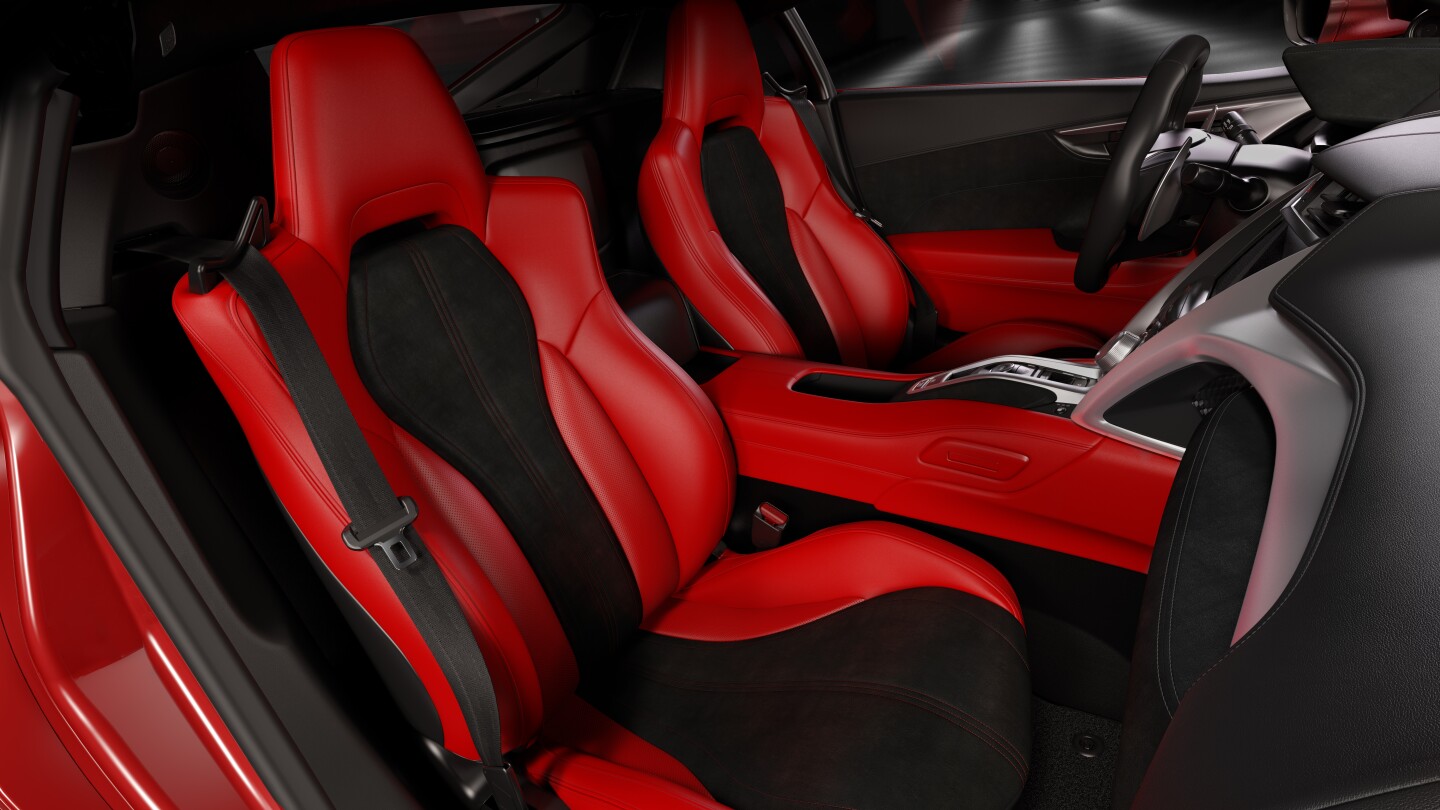
The TFT display is easily reconfigured, has options almost too numerous to mention in displaying the information a driver requires. The mode controls are on the center console and Honda (aaah, Acura), shows its motorcycle heritage by exposing the midframe under the leather dash, with the press release noting that the structural chassis member "reflects the design aesthetic of a naked sport bike." The ultra-thin A-pillar design is reportedly 3D manufactured for optimum strength and minimum obstruction.
Multi-Material Body
The original NSX was the world’s first all-aluminum supercar, so Acura obviously felt it needed to replicate that world's-first material application and construction process with several new ones.
The NSX has a space frame design constructed of aluminum, ultra-high strength steel and a carbon fiber floor, all joined together in new ways to increase torsional strength and rigidity. Details were not available, but Acura claims the NSX features a "world's-first casting technology that combines the design and manufacturing flexibility of a casting process with the strength and elongation properties of a forged material, enabling significant weight reduction." The body panels are a combination of aluminum and sheet molding composite (SMC).
Details
The NSX runs fully independent, all-aluminum front and rear suspension and ContiSportContact high-performance tires – 245/35Z R19 front and 295/30Z R20 rear – mounted on 19 x 8.5-inch front and 20 x 11-inch rear aluminum alloy wheels. The brakes use 6-piston calipers up front and 4-piston monoblock calipers on the rear, all gripping carbon-ceramic brake discs.
New Production Facility
The new production facility is yet another interesting aspect of the NSX. The car will only be manufactured at the new Performance Manufacturing Center (PMC) in Marysville, Ohio. The aim is a manufacturing facility which is as high in performance as the car itself, with total control over all aspects of the supercar's construction so that innovative techniques can deliver "next-generation craftsmanship and world-class quality." The company will begin accepting custom orders in the Northern hemisphere summer, with deliveries later this year.
Source: Acura




























































